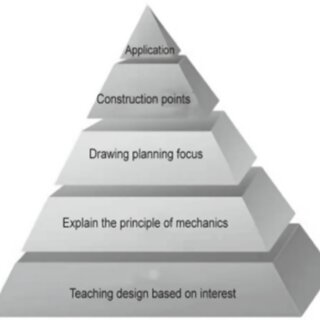Podiatry is a medical field that specializes in diagnosing and treating conditions of the feet, ankles, and
lower extremities. Podiatrists are medical professionals who are trained to evaluate, diagnose, and treat
foot and ankle problems, including injuries, infections, and deformities.

Work description
Podiatrists evaluate patients with foot and ankle problems and develop treatment plans that
may include medication, physical therapy, orthotics, or surgery.
They may also perform diagnostic tests, such as x-rays or MRI scans, to help diagnose conditions
affecting the feet and ankles.
Podiatrists in India typically work in hospitals, clinics, or private practices.
Some common conditions that podiatrists may diagnose and treat include heel pain, plantar
fasciitis, bunions, corns and calluses, and toenail infections.
They may also work with patients who have diabetes or other chronic conditions that affect foot
health.
High Demand
High demand: The demand for podiatrists is on the rise due to the aging population and an increase in
chronic conditions such as diabetes.
Lucrative salaries
Autonomy: Podiatrists can work independently or as part of a healthcare team, and have a great deal of
autonomy in their practice.
Opportunities for innovation
Job security: Due to the high demand, job security is typically high for podiatrists.
Versatility
Good income: Podiatrists can earn a good income, with a median annual salary of around $126,240.
Flexibility
Variety: Podiatrists work with patients of all ages and can specialize in areas such as sports medicine,
wound care, and surgery.
High stress
Lengthy education: Podiatrists typically require a bachelor's degree, a Doctor of Podiatric Medicine
(DPM) degree, and a residency, which can take up to 8 years.
Long hours
Physically demanding: Podiatrists spend a lot of time on their feet and may be required to lift and move
patients.
Competitive field
Emotional demands: Podiatrists may deal with patients who have chronic conditions and may require
long-term care, which can be emotionally demanding.
The cost of pursuing podiatry as a career in India can vary depending on the institution, location, and
duration of the program. Typically, the cost of tuition fees for podiatry courses in India can range from
INR 2-5 lakhs per annum for undergraduate programs and INR 3-6 lakhs per annum for postgraduate
programs.
In addition to tuition fees, students may also need to consider other expenses such as accommodation,
textbooks, equipment, and living expenses, which can vary depending on the city and the lifestyle of the
student.
[wpcharts type=”horizontalbarchart” bgcolor=”red:gray:yellow,blue:gray:yellow,random:gray:yellow,purple:gray:yellow” min=”0″ legend=”true” titles=”2 year , 5 year” values=”3,7,5,12″]
The salary of a podiatrist in India varies depending on their experience, location, and specialization. On
average, a podiatrist in India can earn anywhere between 3-8 lakhs INR per year. However, experienced
podiatrists with a specialization may earn higher salaries.
[wpcharts type=”horizontalbarchart” bgcolor=”red:gray:yellow,blue:gray:yellow,random:gray:yellow,purple:gray:yellow” min=”0″ legend=”false” titles=”Entry-Level, Mid-Career, Senior-Level ” values=”5,15,25,35,45,55″]
Strong interest in biology and anatomy
Good manual dexterity and fine motor skills
Strong analytical skills to diagnose foot and ankle problems accurately.
Ability to work well with patients of all ages and backgrounds
Excellent communication skills to explain complex medical concepts to patients
Strong problem-solving skills to diagnose and treat foot and ankle conditions
Ability to work well in a team environment with other healthcare professionals
Lack of interest in biology or anatomy
Poor communication skills.
Poor hand-eye coordination.
Difficulty working with patients or communicating effectively
Weak problem-solving skills or difficulty making diagnoses
Inability to work effectively in a team environment
Poor attention to detail or accuracy in diagnosing and treating conditions
Work-life balance
Podiatry can offer a good work-life balance for practitioners, depending on the type of practice they
choose. For example:
Private practice: Podiatrists who own their own practice have more control over their schedule and may
be able to set their own hours. However, they may also have to work longer hours to manage the
business side of their practice.
Hospital or clinic setting: Podiatrists who work in a hospital or clinic setting may have more set hours
and a regular schedule. However, they may also be required to work some evenings or weekends to
accommodate patient needs.
Part-time work: Some podiatrists may choose to work part-time, which can provide more flexibility in
their schedule and allow them to pursue other interests or responsibilities outside of work.

Improving quality of life for patients by treating foot and ankle conditions
Reducing healthcare costs by providing preventive care and early intervention for foot and ankle
problems
Increasing access to healthcare by providing care in various settings, including private practices,
hospitals, and clinics
Contributing to research and development of new treatment options for foot and ankle
conditions
Supporting public health initiatives by promoting good foot and ankle health and preventing
foot-related injuries and illnesses
Creating job opportunities for other healthcare professionals, such as nurses, medical assistants,
and administrative staff
Artificial Intelligence Machine Learning
Involves developing algorithms that enable machines to learn from data and make decisions without human intervention.
Cyber security
Focuses on protecting computer systems, networks, and sensitive data from unauthorized access, attacks, and theft.
Software Engineering
Involves designing, developing, and maintaining software applications and systems.
Data Science Machine Learning
Involves processing, analyzing, and interpreting large and complex data sets using statistical and computational methods.
Computer Networks
Focuses on designing, implementing, and maintaining computer networks that enable communication and data transfer between devices.
Conclusion:
In conclusion, podiatry is a growing field that offers opportunities for those interested in foot and ankle
care. With a range of specializations and good earning potential, podiatry is a viable career option for
those who enjoy working with patients to improve their foot health.



